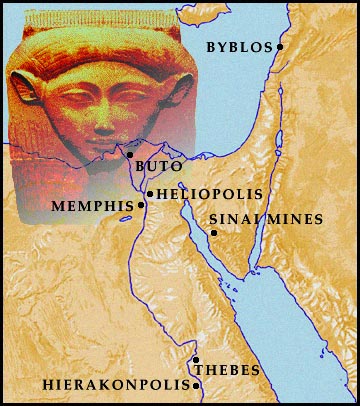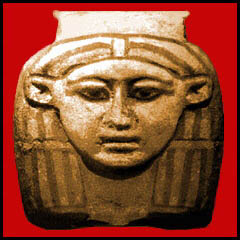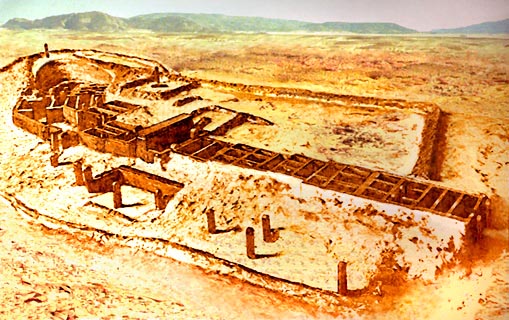THE HATHOR-BYBLOS CONNECTION

|
BYBLOS COMES TO EGYPT No Egyptologist or ANE archeologist can tell us when the first ship from the ancient Phoenician port of Byblos was sailed or rowed into a port in the Egyptian Delta. All we know that it was very long ago, before the First Dynasty, and probably before the tribes in either Upper or Lower Egypt had begun to unite into the two kingdoms. We can make a very good guess about the cargo carried in that vessel however: cedar logs, evergreen tree resins, silver, in short, all the raw materials that Byblos traders had learned were scarce or lacking in the southern land.That the first substantial shipping contacts flowed from Byblos down to Egypt (and not in the other direction) is unquestioned; although acacia wood boats had long sailed the Nile, Egypt did not possess the materials, skills, or administrative organization to mount appreciable seagoing trade efforts until the early dynastic period. By the time Old Kingdom kings began to send their own flotillas northward, Byblos had been Egypt's trading partner on the Syrian coast for ages. In the meanwhile more than just raw materials had sailed southward with the Byblos fleet; for along with its sailors and traders came technology and innovations from the great Mesopotamian cities of the northern hinterland. There is good reason to believe that some of these Mesopotamian innovations provided sparks to kindle the first flames of Old Kingdom Egyptian civilization. Upper Egypt was probably united into a viable kingdom with the assistance of technology, advisors, and perhaps warriors from the northern end of the Fertile Crescent. And the early arts and architecture of the Two Lands owe much to Mesopotamian prototypes carried up the Nile in a sudden burst of infiltration at the very dawn of Egyptian civilization. In fact, Egyptian writing itself probably owes some of its origins to pictographs carried southward in the inventory lists of Byblos merchantmen. The ancestor of the ancient Byblos script which evolved into today's alphabet was likely a later development of the same exchange process.
--==( O )==--
Baalat resided in a famous Gebal temple built at about the same time that Egypt was coming together in two separate kingdoms. While that temple was likely only the latest in a series of prehistoric goddess shrines at the site, it was the first of those holy places to make it into the ancient equivalent of "the history books." And it did so as the first temple of Hathor outside of the Nile Valley. Old Kingdom Egyptians seriously believed that their goddess lived on the Phoenician coast in this remarkable Byblos temple! This is an extraordinary concept in early dynastic religion and begs for some serious explanations. Unfortunately not much in the way of helpful information on this oddity is available today. We wonder whether elements of the Baalat cult drifted southward from Byblos to take root along the Nile, or whether Egyptian notions of goddess worship were carried home by the Byblos traders. Perhaps the safest assumption is that the Byblos cedar timber was so terribly important to Egyptian building and shipmaking projects that it had to come under the protection of the gods. Since the Baalat of Byblos was very similar to the Hathor of Egypt, the two were seen as being the same in Egyptian eyes. 
--==( O )==--
Some interesting goddess traditions grew out of the Hathor-Baalat association. Hathor became the goddess who protected Egyptians who traveled abroad to distant lands and, by extention, the goddess of foreign lands in general. Although we have no Egyptian myths of Hathor at Byblos, her sister goddess Isis is linked to that place in the Osiris cycle and her story may have been based on a Hathor original. Long before the Amarna Aten was worshipped as a universal god, Hathor, the goddess of the sky stretched out above the whole world, had assumed some universal elements herself. With the development of divine solar kingship in the Two Lands, Hathor was identified with the Eye of Ra who traveled to distant lands on the Great God's behalf, and who sometimes had to be enticed back from those distant places (Kush or Nubia, for example) to do Ra's work for him. Hathor also became the goddess in charge of natural resources brought back to Egypt from far off places. This identification was particularly strong in the case of imported mineral wealth.
--==( O )==--
Sometime between the end of the Old Kindom and the beginning of the Middle Kingdom Hathor came to be identified as the goddess in charge of the Sinai mineral wealth. Inscriptions and pictorial carvings at Serabit el-Khadim and Wadi Maghara identify her as The Mistress of Turquoise, the divine supplier of the minerals, and the protectoress of the miners who went to Sinai to take portions of her wealth back to Egypt. Early in Middle Kingdom days a unique Hathor temple was constructed by the miners who traveled back and forth between the Nile Valley and the desolate "turquoise terraces" of Serabit el-Khadim. Although Egyptian temples had earlier been built along the southern reaches of the Nile as Egyptian power pushed into Nubia, the Hathor temple at Serabit el-Khadim appears to have been the first Egyptian temple ever built outside of the Nile Valley.  Hathor Temple Comples Ruins, at Serabit el-Khadim in the Sinai
Hathor Temple Comples Ruins, at Serabit el-Khadim in the Sinai
As the first external Egyptian religious endeavor, it shouldn't surprise us to find numerous parallels between the Serabit shrine and the temple at Gebal. Hathor and Baalet were worshipped as the primary deities in both remote places; Egyptian kings sent rich votive offerings and set up pious inscription stelae in both places; and early alphabetic script inscriptions in Semitic language occur at both Gebal and Serabit. The facts behind the last phenomenon have yet to be fully uncovered but it is possible that some of the Egypt-based Canaanite workers employed at the Serabit mines had contacts with kinsmen or other associates who used the Byblos "proto-Canaanite" script. Hathor's associations with turquoise and gold were befitting of a sky goddess who bore the fiery yellow sun. And her overlap with the Baalat of Gebal and Serabit proved useful when the 18th and 19th Dynasty pharaohs extended the Egyptian Empire into such remote reaches of Palestine as the Timna copper mines of the Arabah. There, in about the same period where historians place the Israelite Exodus, yet another Hathor temple was set up among the Semitic peoples of Edom and Midian. Other gods and goddesses may have followed the imperial troops into Syro-Palestine, but Hathor seems to have already touched the local spiritual psyche; her full face, distinctive wig, and horned head are to be found assimulated into the small, naked female figurines turned out by the thousands among the local population over the centuries. The Hathor of sky-blue gemstone and sunny gold may not have been the exact equivalent of Astarte and Ishtar in the north, but her attributes and powers flowed into Baalat, and through her into the lives of countless Palestinians. Hathor essay and computer graphics by Dale R. Broadhurst |
return to top of page
The Sistrum in the Sinai | Hathor Home Page | Dale R. Broadhurst Home Page
last updated: Feb. 1, 2006